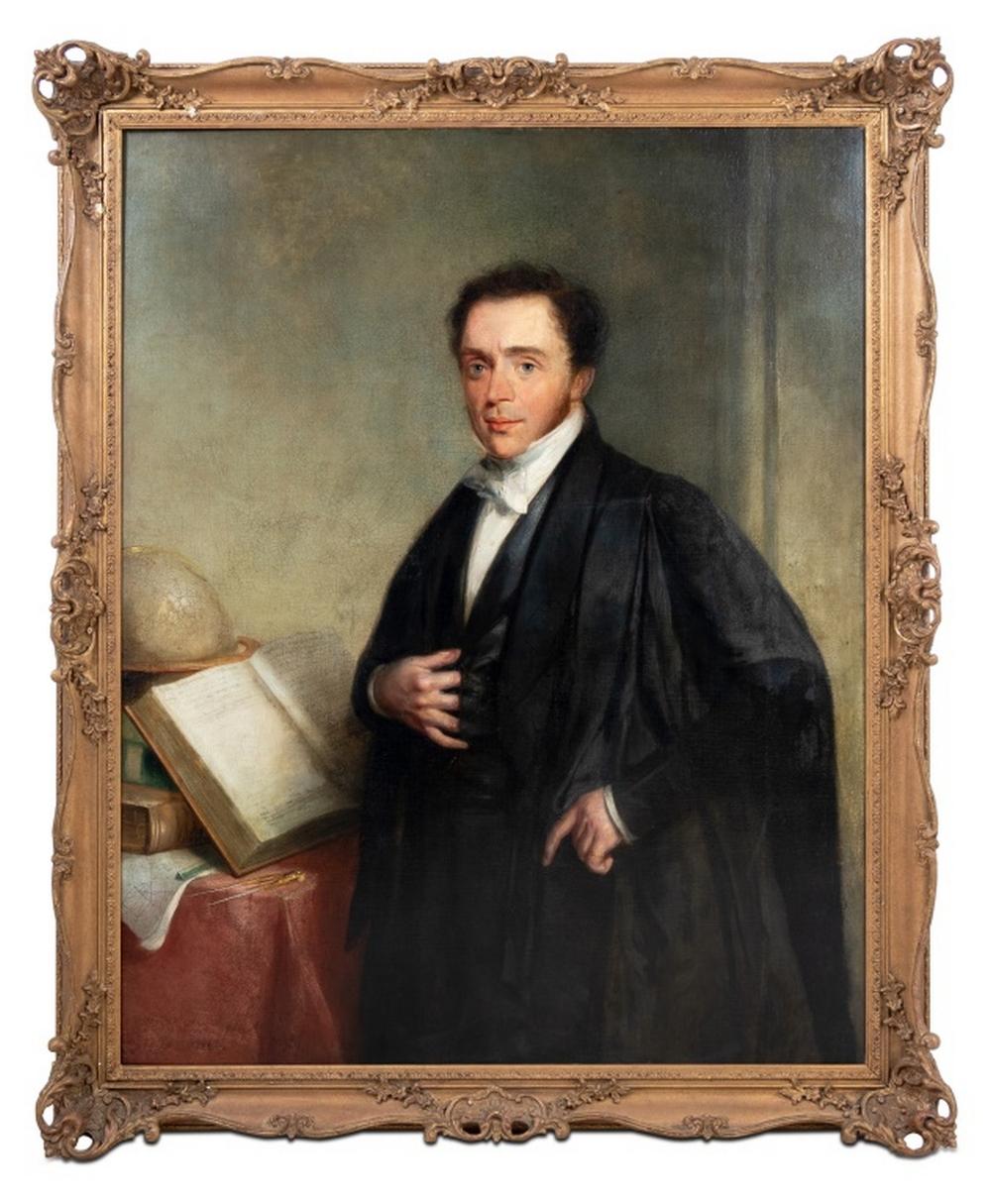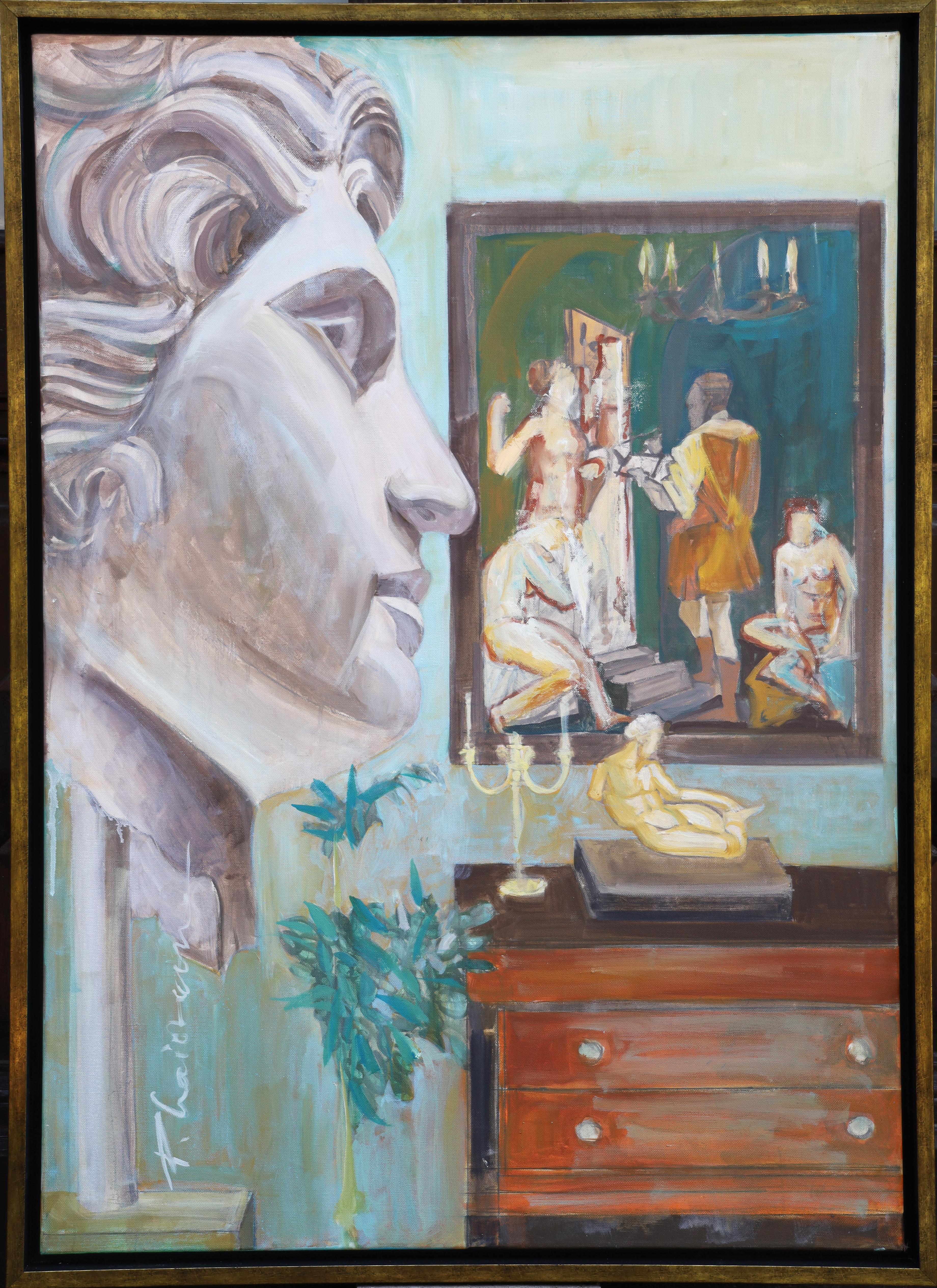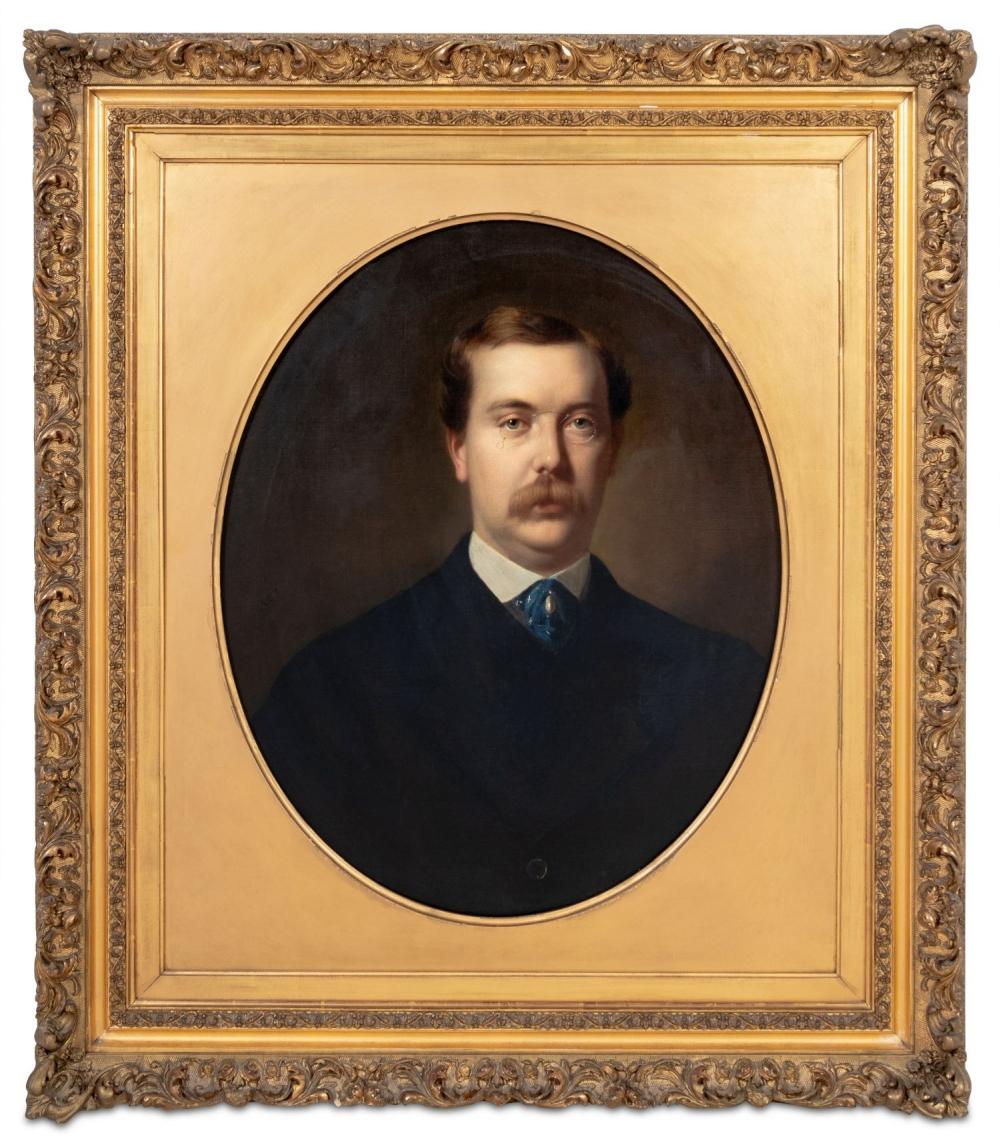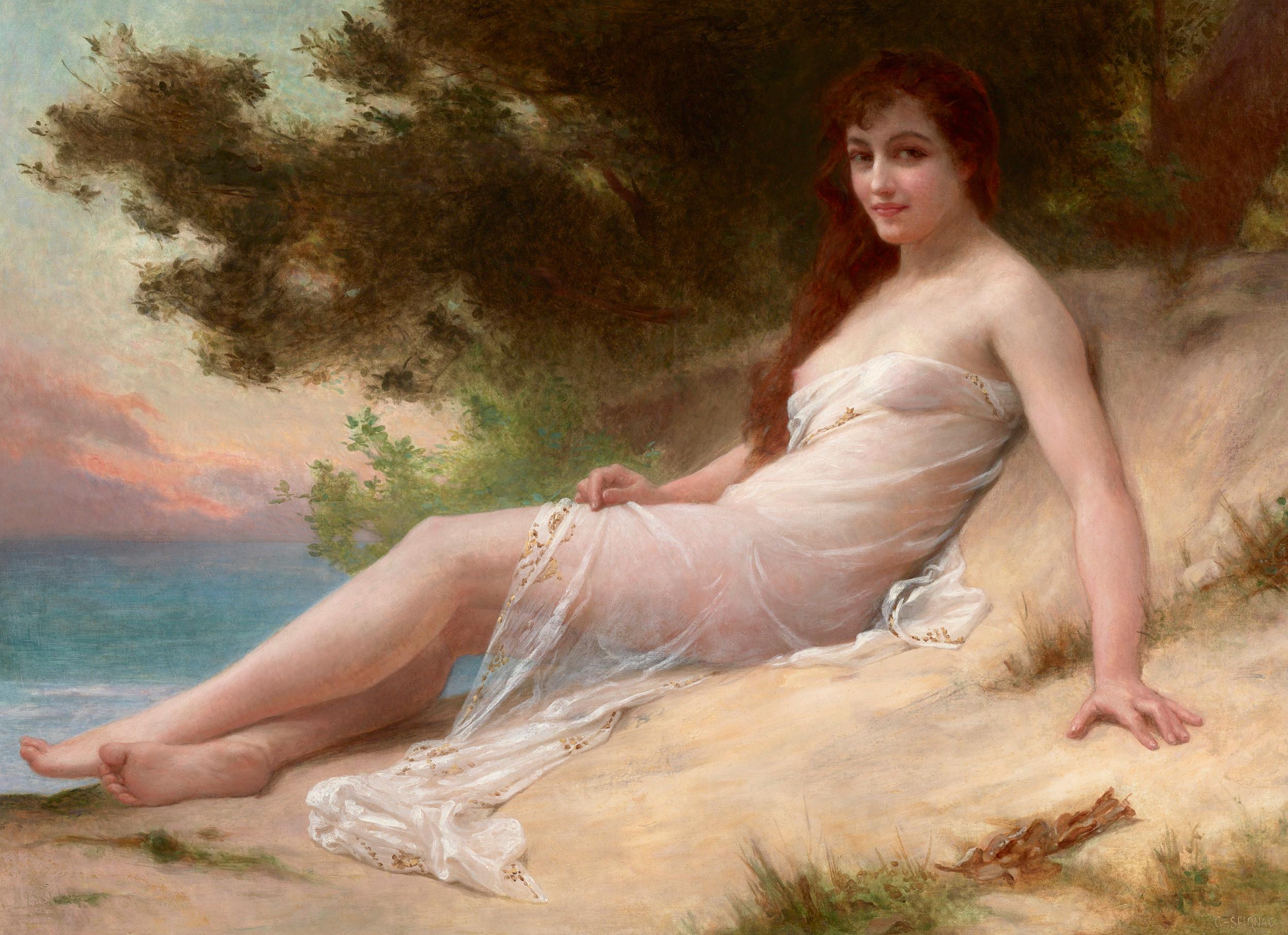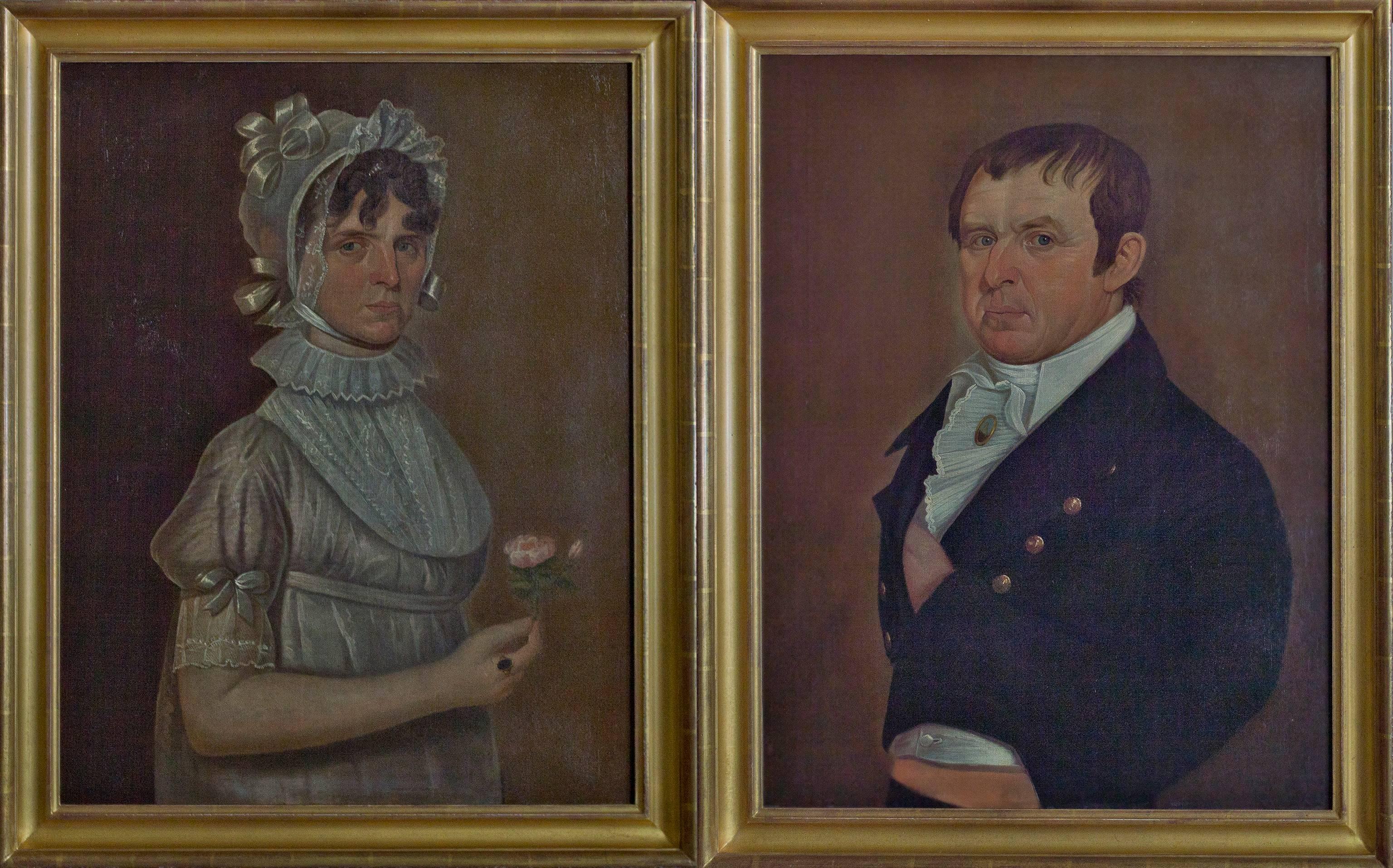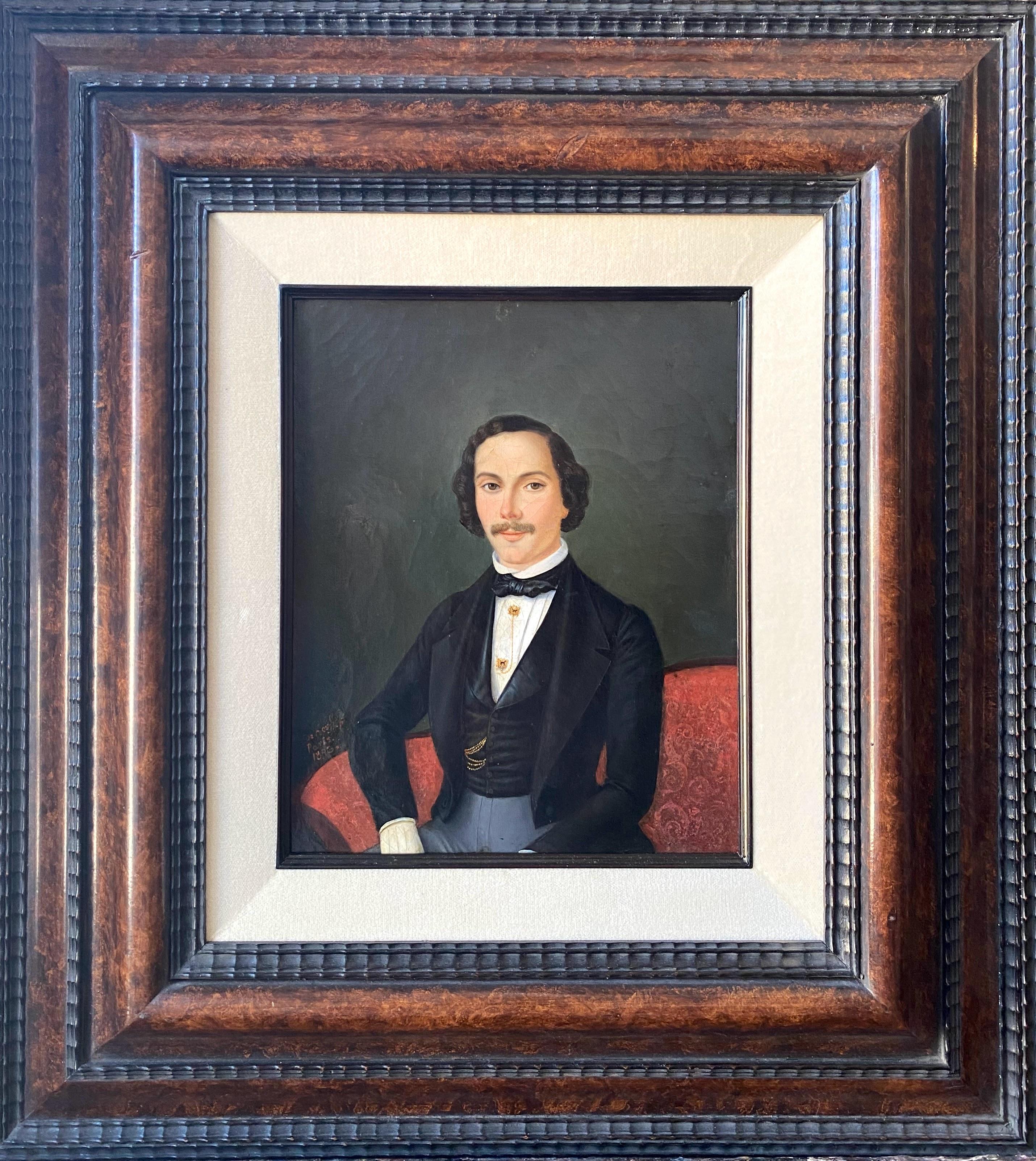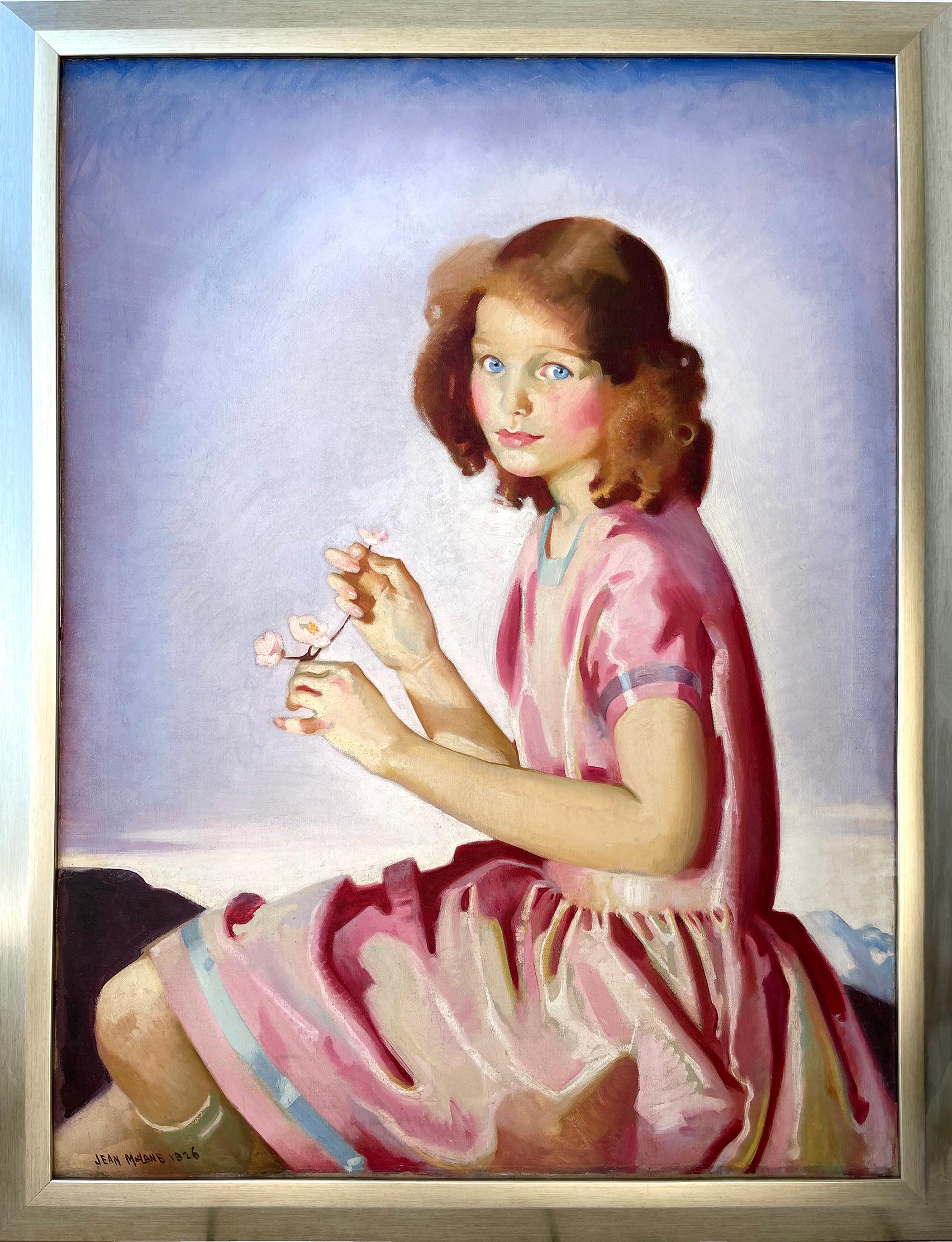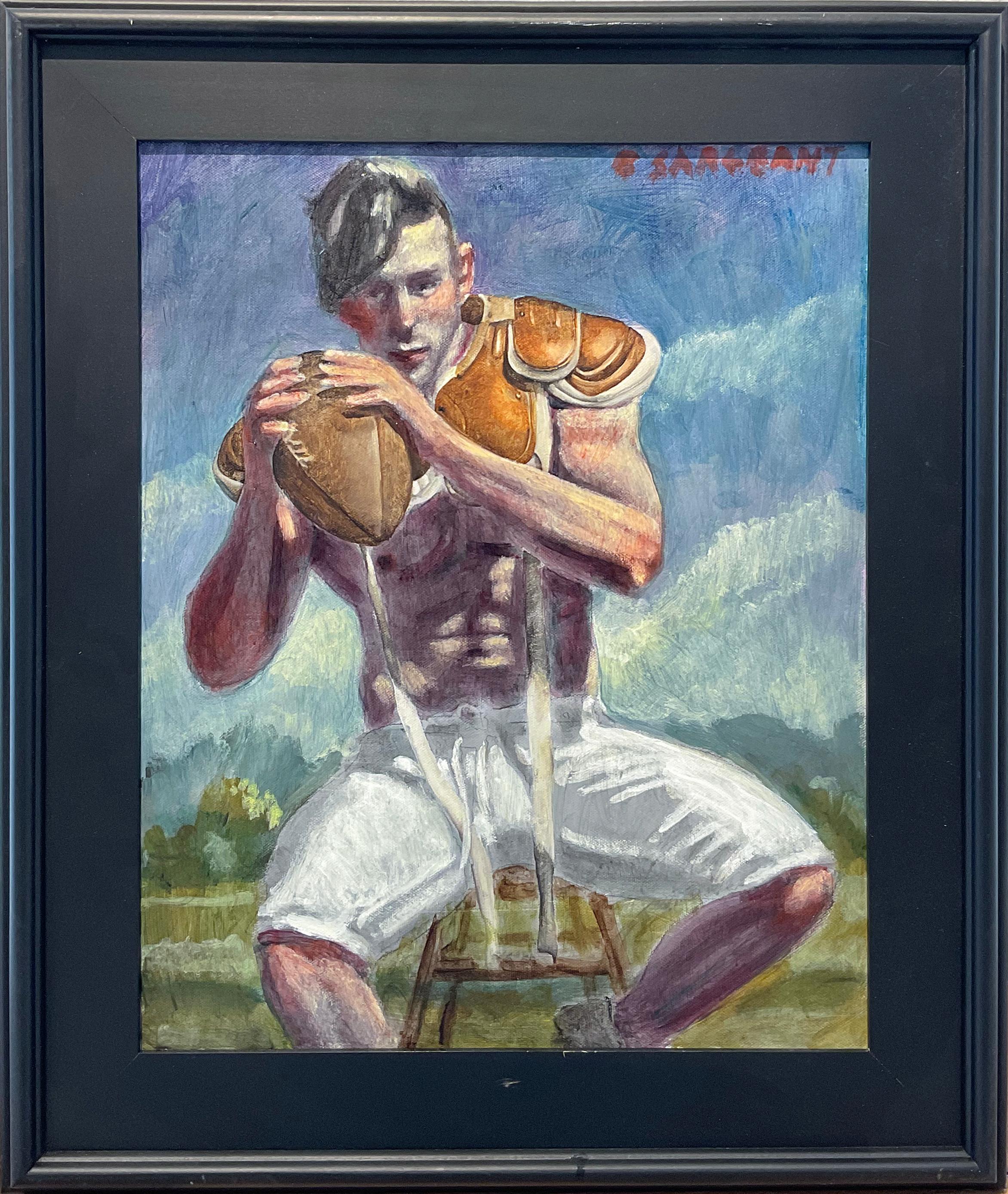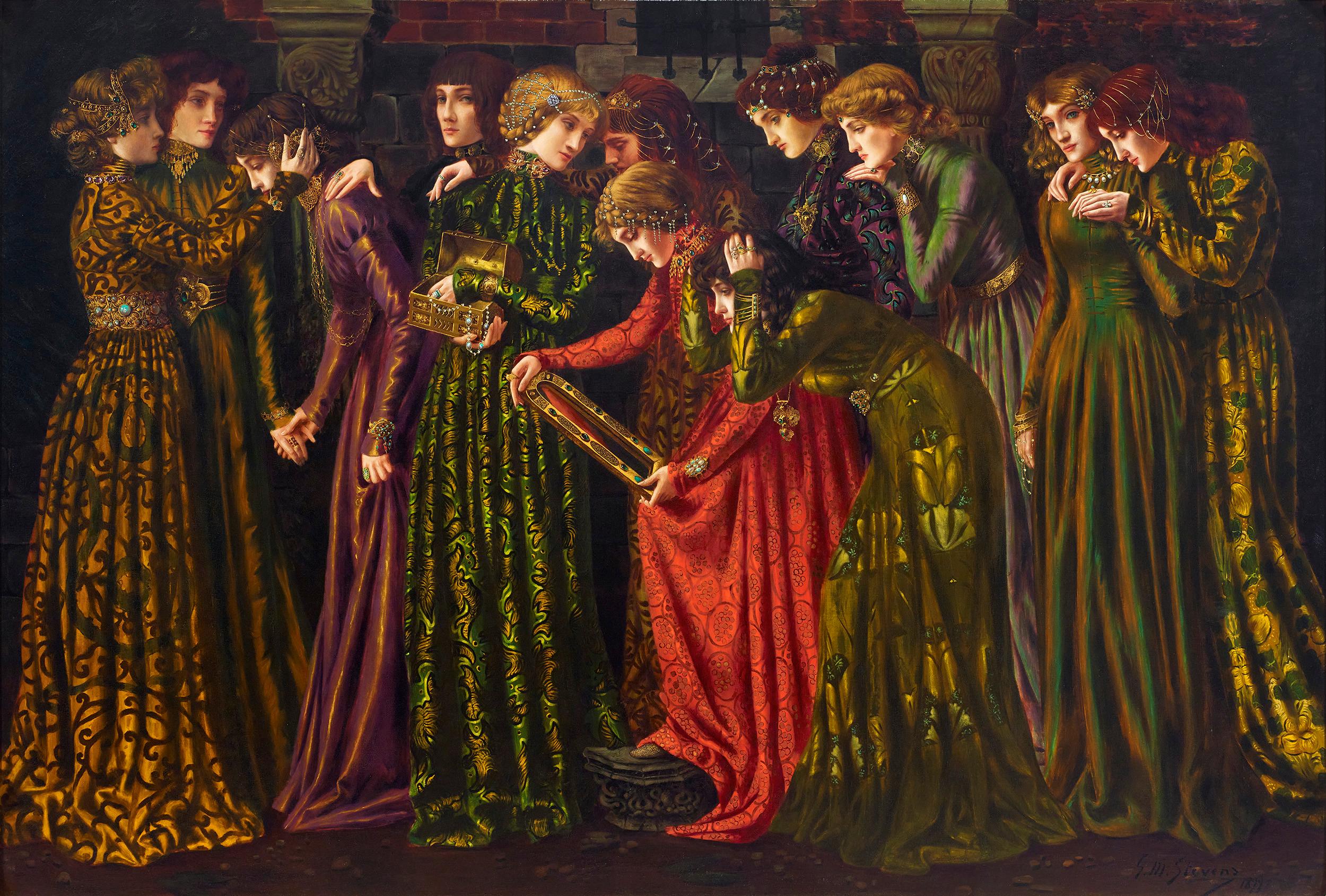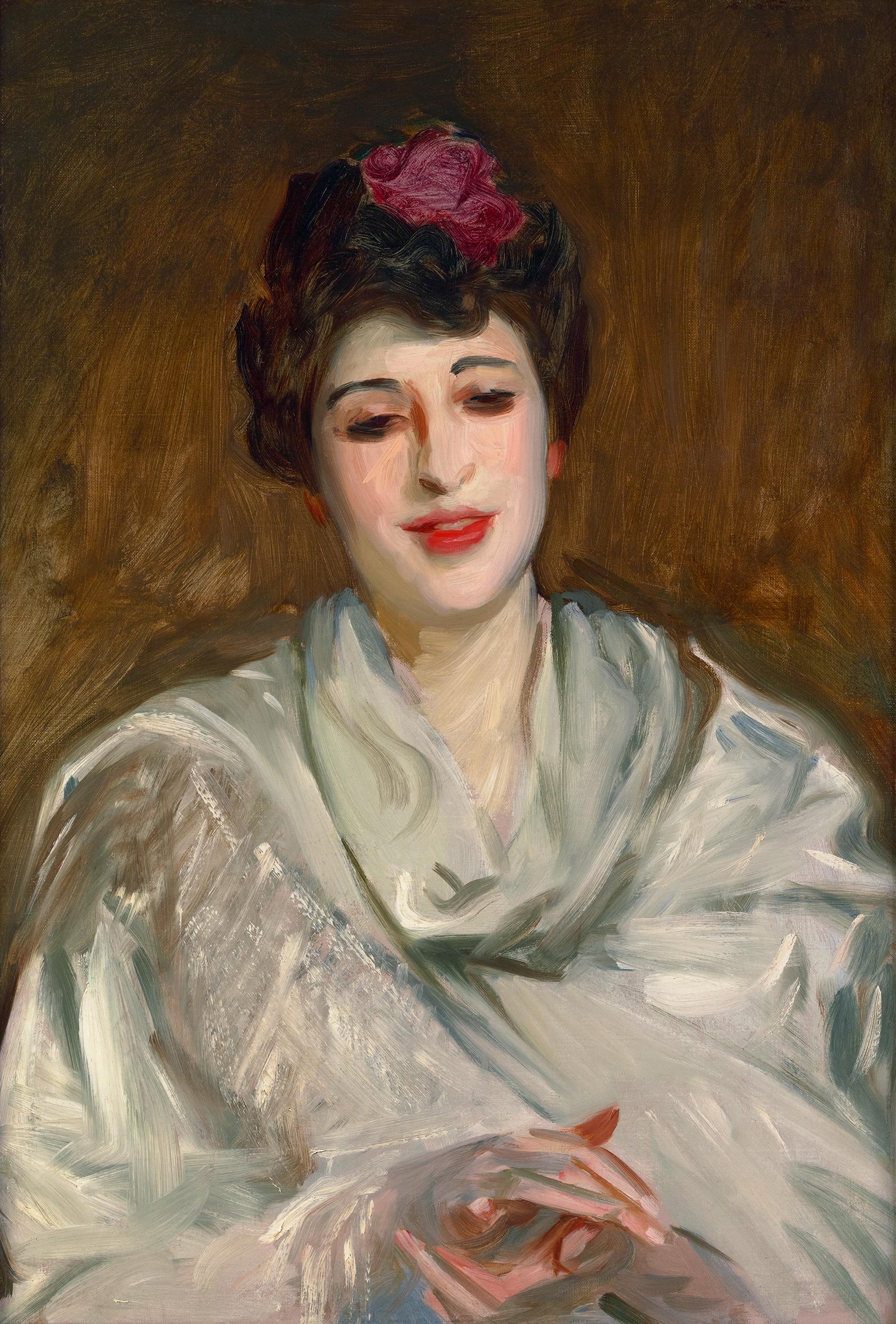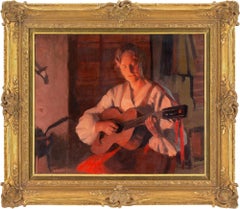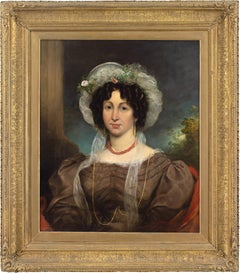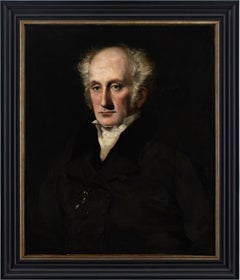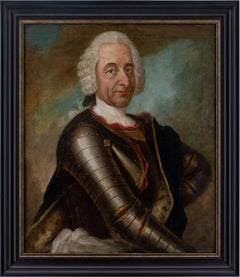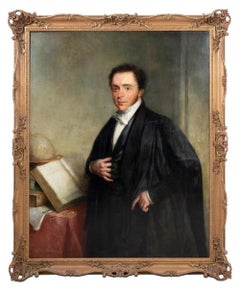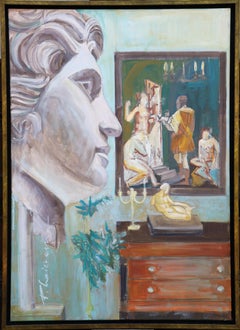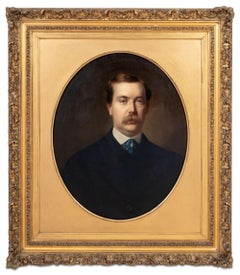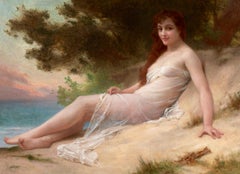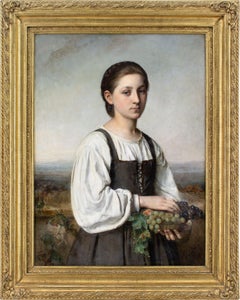
Sophie Ribbing, Portrait Of An Italian Girl Holding A Basket Of Grapes
Want more images or videos?
Request additional images or videos from the seller
1 of 12
Sophie RibbingSophie Ribbing, Portrait Of An Italian Girl Holding A Basket Of Grapesc. 1860
c. 1860
About the Item
- Creator:Sophie Ribbing (1835 - 1894, Swedish)
- Creation Year:c. 1860
- Dimensions:Height: 45.5 in (115.57 cm)Width: 36.5 in (92.71 cm)
- Medium:
- Movement & Style:
- Period:
- Condition:Cleaned. Craquelure throughout. One historic repair. The paint layer is stable. Frame in good condition with minor age-related wear.
- Gallery Location:Cheltenham, GB
- Reference Number:1stDibs: LU2328215041802
About the Seller
5.0
Platinum Seller
Premium sellers with a 4.7+ rating and 24-hour response times
Established in 2017
1stDibs seller since 2023
230 sales on 1stDibs
Typical response time: 2 hours
Authenticity Guarantee
In the unlikely event there’s an issue with an item’s authenticity, contact us within 1 year for a full refund. DetailsMoney-Back Guarantee
If your item is not as described, is damaged in transit, or does not arrive, contact us within 7 days for a full refund. Details24-Hour Cancellation
You have a 24-hour grace period in which to reconsider your purchase, with no questions asked.Vetted Professional Sellers
Our world-class sellers must adhere to strict standards for service and quality, maintaining the integrity of our listings.Price-Match Guarantee
If you find that a seller listed the same item for a lower price elsewhere, we’ll match it.Trusted Global Delivery
Our best-in-class carrier network provides specialized shipping options worldwide, including custom delivery.More From This Seller
View AllSam Uhrdin, The Twilight View
By Sam Uhrdin
Located in Cheltenham, GB
This beautiful mid-20th-century oil painting by Swedish artist Sam Uhrdin (1886-1964) depicts a woman playing the guitar in a gently lit room at twilight.
Bathed in a warm radiance ...
Category
1950s Portrait Paintings
Materials
Canvas, Oil
George Clint ARA (Attributed), Portrait Of A Lady In A Brown Dress
Located in Cheltenham, GB
This early 19th-century half-length portrait attributed to British artist George Clint ARA (1770-1854) depicts a young lady wearing a beautiful brown dress, bonnet decorated with small flowers, gold earrings and coral necklace. Clint was a distinguished painter and mezzotint engraver predominantly known for portraiture and dramatic scenes.
Set before an evocative classically-inspired backdrop, she looks out from across the centuries with a composed demeanour. Adorned in the latest fashions, oversized ‘gigot’ sleeves, a delicately-poised bonnet, and a coral necklace for good luck. It’s a charming portrayal by a masterful hand.
Born at Drury Lane, in the heart of London’s West End, George Clint was destined to lead an exuberant life amid the spectacle of theatreland. His father, Michael Clint, was a hairdresser during a time of “hair pomatum, whalebone, wire, lace gauze, and feathers” - so young George would have encountered a variety of ‘characters’ during his childhood.
But despite these elevated surroundings, he soon discovered the darker side of London when thrust into the world of employment. Apprenticed initially as a fishmonger, he trained under a ferocious master who was known to beat him. The hours were unsocial, the conditions rank, and the work was brutal. He soon quit but subsequently found himself toiling for a corrupt attorney who demanded he undertake unscrupulous acts on his behalf.
Seeking a less volatile role, he turned next to house painting, at which he excelled. Commissioned, among other projects, to paint the stones of the arches in the nave of Westminster Abbey. Aside from an incident whereby he almost fell from the second story of a building, all was going well.
Following his marriage in 1792 to Sarah Coxhead, a farmer’s daughter, he began work in earnest as a painter of miniatures, determined to forge a career. Robert William Buss’ memoir celebrates Clint’s success as a miniaturist, stating that “great manual excellence was united with that chaste, delicate feeling for female beauty which characterised all Mr. Clint's portraits of ladies.”
Until this point, it appears he was predominantly self-taught, presumably constrained by a lack of finances. But from hereon in, his industrious nature coupled with several fortunate encounters, led to him developing an enviable talent for both painting and engraving. During the early 19th-century, the acquaintances one kept could make or break your fortunes and perhaps acutely aware of this, Clint’s ‘society’ was an ever-evolving circle of influential personalities.
He was “initiated into the mysteries of engraving” by Edward Bell (act.1794-1819) and produced numerous works after the foremost artists, such as George Stubbs, John Hoppner, and Thomas Lawrence. Following a commission from Lawrence, he struck up a long-term friendship.
Admired for his skill as a mezzotint engraver, he sought next to hone his technique in oils and, as with many aspiring portraitists, his first work in this respect was a depiction of his beloved wife. The pair were both delighted with it, yet over time Clint began to doubt himself and sought the validation of a superior hand - that of Sir William Beechey (1753-1839). However, paralysed with insecurity, he couldn’t face the potential criticism, so his wife took it instead - “with a child under one arm and the portrait in the other”. The result was immeasurably more positive than he’d envisaged and he became closely associated with Beechey until his death in 1839.
Numerous commissions followed from the landed gentry including Lord Egremont, Lord Spencer, and Lord Essex. But also from the theatrical community who would fill his studio at 83 Gower Street, Bloomsbury. His connections within the world of acting led to notable works such as ‘Malvolio and Sir Toby’ (from William Shakespeare's 'Twelfth Night', Act II, Scene iii)’ and ‘Harriet Smithson as Miss Dorillon, in Wives as They Were, and Maids as They Are’.
While his efforts in mezzotint included several contributions to JMW Turner’s Liber Studiorum.
As a measure of his success, Clint was elected an Associate of the Royal Academy in 1821 - a position he later relinquished for personal reasons. Today, he’s represented in numerous public collections including at The British Museum, Harvard Art Museums, The Met, V&A, Yale Center for British Art, and the National Portrait Gallery.
“The respect in which he was held, not only by his brother artists, but by an immense number of eminent men in various professions, and others of the highest rank, was the result of a rare combination of talent, candour, suavity of manner, and integrity of purpose”. [Obituary, 1854].
Housed in a period gilt frame, which is probably original.
Learn more about George Clint ARA in our directory.
Labels & Inscriptions: Supplier’s stencil from Rowney & Forster. The National Portrait Gallery holds a database of supplier’s stencils over the decades. The one here is also presented on two other works by George Clint. ‘Falstaff’s Assignation with Mrs Ford...
Category
1830s English School Portrait Paintings
Materials
Canvas, Oil
John Robert Wildman, Portrait Of A Gentleman
Located in Cheltenham, GB
This mid-19th-century oil painting by British artist John Robert Wildman (1788-1843) depicts a gentleman wearing a dark brown frock coat with waistcoat, white shirt and cravat. He be...
Category
1840s Portrait Paintings
Materials
Canvas, Oil
Mid-18th-Century German School, Portrait Of An Aristocrat In Armour
Located in Cheltenham, GB
This mid-18th-century half-length German portrait depicts a middle-aged aristocrat wearing armour and a wig.
Despite his heavily-clad appearance, it’s likely that this rather noncha...
Category
1750s Old Masters Portrait Paintings
Materials
Oil, Canvas
17th-Century Flemish School, Portrait Of A Gentleman In A Justaucorps
Located in Cheltenham, GB
This fine late 17th-century Flemish portrait depicts a distinguished gentleman wearing a justaucorps, black cloak, white shirt, vest, leather gloves, and breeches. He’s carrying a wi...
Category
1670s Old Masters Portrait Paintings
Materials
Canvas, Oil
Early 19th-Century Central European School, Christ The Saviour
Located in Cheltenham, GB
This early 19th-century central European oil painting depicts Christ The Saviour standing atop an orb and carrying a cross over his left shoulder.
An unusual composition, Christ’s rather striking posture is perhaps more ‘Saturday Night Fever’ than it is sacramental. However, the iconography is archaic and derived ultimately from New Testament illustrations dating to the Middle Ages. Depictions of orbs are usually symbolic of the universe, while the cross alludes to redemption. Hence, it’s a visual representation of Christ as the Saviour of humanity.
Francisco de Zurbarán...
Category
1830s Portrait Paintings
Materials
Canvas, Oil
You May Also Like
English School Portrait of a Scholar Oil on Canvas
Located in Astoria, NY
English School, Portrait of a Scholar, Oil on Canvas, early 19th century, signed indistinctly and dated lower left, ornate giltwood frame. Image: 51.25" H x 40.5" W; frame: 57" H x 4...
Category
Early 19th Century Academic Portrait Paintings
Materials
Canvas, Oil
The Painter's Studio original painting by Paula Craioveanu oil on canvas Framed
By Paula Craioveanu
Located in Forest Hills, NY
"The Painter's Studio", oil on canvas, 39x27.5in / 100x70cm
The artist's studio and art objects part of artist' life and work. A sculpture, an antique head and a painting that remin...
Category
2010s Academic Figurative Paintings
Materials
Canvas, Oil
Etienne Billet Portrait of William H. Fitch Oil on Canvas
Located in Astoria, NY
Etienne Billet (French, 1821-1888), Portrait of William Harold Fitch, Oil on Canvas laid on Board, circa 1870, signed mid left, inscribed "William Harold Fitch / of Marseilles France...
Category
1870s Academic Portrait Paintings
Materials
Canvas, Oil
Solitude
By Guillaume Seignac
Located in New Orleans, LA
French Academic painter Guillaume Seignac was renowned for his masterful treatment of the idealized nude. His languishing female subjects based on Greco-Roman prototypes were and rem...
Category
19th Century Academic Nude Paintings
Materials
Canvas, Oil
18th century diptych portraits man and woman American formal dress flower
By William Jennys
Located in Milwaukee, WI
The present pair of portraits would make an exceptional addition to any collection of early American art not only because they were painted by the notable William Jennys, but also because the sitters are members of notable and influential New England families. In addition, these pendants have impeccable provenance: they have never left ownership of the decedents of the Kimball family and this is the first time they have been available for purchase.
David Kimball (1766-1848) and Nancy Stacy Kimball (1774-1844) were members of historic Massachusetts families. David Kimball is a sixth-generation decedent of Richard Kimball (d. 1675) and Ursula Scott (d. 1659), who emigrated from Rattlasden, Suffolk County, England to Watertown MA around 1634. The family then relocated in 1637 to Ipswich, the city with which the family is now most strongly identified, when Richard was appointed to be a wheelwright.[1] Nancy likewise had early New England ancestry, descended from Simon Stacy and Elizabeth Clark, who were married in London in 1620.[2]
Nancy Stacy was the second wife of David Kimball, and the two were married in 1799. Given this, the present pendant portraits were likely completed shortly after the marriage. David had two children by his first wife Mary Morse, who died in September of 1798. David and Nancy would have nine additional children between 1801 and 1815.[3]
Most notably, the couple were parents of the Boston politician and showman Moses Kimball (1809-1895).[2][3] Moses would found the Boston Museum, an early for-profit museum and theater opened in 1841 that resembled European curiosity cabinets: the museum displayed paintings of Thomas Scully and Charles Peale alongside Chinese artwork, stuffed animals, dwarves and mermaids. Alongside these exhibits, visitors could attend the theater which held performances by gymnasts and contortionists, followed by performances of Shakespeare and Dickens.[4] This museum set the model for the Museum of Fine Arts, Boston, which when founded in 1870 held a similarly diverse collection and appealed to the interests of a diverse set of visitors.[5] Moreover, some Greek antiquities from Moses Kimball's museum were eventually given to the MFA and Moses donated approximately $5,000 to the MFA's endowment upon his death.[6][7]
William Jennys (1774–1859), also known as J. William Jennys, is an important American primitive portrait...
Category
1790s Academic Portrait Paintings
Materials
Oil, Canvas
The Dandy a Salon in Paris 19th Century portrait of a young man French painting
Located in Norwich, GB
A wonderful depiction of a dapper Parisian dandy, dating from 1848. I love his air of decadence! It is a work by F de Korff, a mysterious French aristocratic portrait artist who had ...
Category
Mid-19th Century Academic Portrait Paintings
Materials
Canvas, Oil
